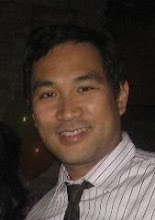by Jose B. Sibayan
I arrived in Manila in August, 1936 by train from Nueva Ecija to the Tutuban Station, then took a caretela to Mabolo Street where the house of Mg. Loling was located near Avenida Rizal and Azcarraga Streets. Most of the vehicles were the street car and horse drawn carriages called caretela and calesa. There were no buses then, but there were lots of private cars. I saw young children swimming and taking a bath in the Pasig River which was fresh and clean near the Jones Bridge. The bridge in Quiapo was a hanging bridge called Colgante Bridge.
Food in Manila was quite cheap. With five centavos one could have a complete meal of two centavos of rice, two centavos of fish and one centavo of banana or a cake of brown sugar for dessert. Balut was then only three centavos each and a bottle of soda called sarsaparilla was three centavos. On my first payday, I went to eat in a very expensive restaurant in Avenida Rizal for fifty centavos where I tasted the best meal in my life consisting of meat, vegetable, egg, fish, and ice-cream for dessert. Upstairs was a hotel where Mg. Trining later on had a wedding party in 1940 with Tata Anton giving her away because Tata Equio, her father, already died.
Manang Loling gave me a space in the lower part of their apartment under the stairway for my cot-bed. Every time they went up stairs dust fell on my face. I babysat for Bella, their eldest daughter with Mg. Agapito Raagas, who was a married man with two children. Sometimes I had sleepless nights when Mg. Loling asked me to ride with her in a taxi to spy on Mg. Pito if his car was parked near the house of his real wife in Paco. Later on when I arrived from office I saw many broken plates, glasses and mirrors in the house.
The first thing I did when I was settled down was to enroll in vocational school to take up typewriting and stenography near the Sta. Cruz Bridge where I went after office hours from six to ten in the evening. I hiked all the way from Binogo to Plaza Sta. Cruz and then to Mabolo Street from school on an empty stomach because my fourteen pesos a month salary was just enough for my enrollment fee and a lunch at noontime at work.
My malaria which I contracted when I was a laborer in Kiangan re-occurred and I was hospitalized. It was almost a month before I got well. When I left the hospital I looked for a boarding house near the Headquarters in Binodo at Reina Regente Street. I said “good-bye” to Mg. Loling and Mg. Pito and transferred to a place nearer my office just a few blocks away. Aside from my salary I was given an allowance of eight pesos monthly for room and board and lodging plus five pesos for laundry.
I continued my studies at night. Every morning at five I went to clean the office of Gen. Santos and the office of an American Advisor, Lt. Col. James B. Ord, which was the only air-conditioned office in the Headquarters then in 1936. There was only one lady secretary in the entire headquarters by the name of Miss Dizon who worked with Mr. Robert Woods in the Adjutant General’s office. My job during office hours from 8 AM to 5 PM was running errands for Gen. Santos; calling officers for conference with him and bringing papers to and from his office. There was no office intercom then. In the afternoon when Gen. Santos and Col. Ord were out, I used the air-conditioned office of Col. Ord for studying my stenography and typing lessons. I was able to type the entire Charles Atlas Course, loaned to my by Mr. Jovencio Toralba, a civilian stenographer and had it book-bound and at the same did the exercises every day. Up to this date I still do the dynamic tension exercises daily. In a yellow paper I typed the translations of my Gregg Stenography lessons and had them book-bound too. In January 1937 I was promoted from Private to Corporal with twenty-two pesos monthly pay.
Monday, June 16, 2008
1936 - Arrival in Manila
Labels:
1936,
food,
Jose Sibayan,
lolo,
Manang Loling,
Manila,
Manong Pito,
stenography,
typing
Subscribe to:
Post Comments (Atom)

No comments:
Post a Comment